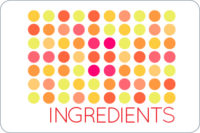Do your part to ensure safety


|
Indeed, given the right circumstances, harmful bacteria can quickly multiply in food, going undetected by the human eye. Consuming large numbers of these microorganisms can result in food poisoning, and depending upon the severity, the malady can be fatal.
According to the 1,000 American adults surveyed during a two and a half-week period in March and April for the 2011 Food & Health Survey: Consumer Attitudes Toward Food Safety, Nutrition & Health, consumers recognize that food safety is a shared responsibility among all parties involved in the supply chain, from farm to table. However, according to the survey, which was commissioned by the International Food Information Council (IFIC) Foundation, Washington, D.C., two-thirds (67%) of those surveyed believe that food manufacturers are responsible for ensuring that their products are safe.
This can be quite challenging for animal protein manufacturers, as many of the traditional ingredients associated with providing an extra safety net do not complement today’s trend towards all-natural and clean labeling.
A good example is the use of nitrites in many sausages. Nitrites not only contribute flavor and color, but also prevent the growth of Clostridium botulinum. However, nitrites are perceived by many consumers as negative. In fact, national retailer Whole Foods Market has nitrites on its list of unacceptable ingredients.
The pathogen that is likely the greatest concern for ready-to-eat animal-protein manufacturers is Listeria monocytogenes, which, if consumed, can cause the human illness listeriosis. In fact, according to a risk assessment of Listeria carried out by federal agencies less than a decade ago, deli meats were identified as a very high risk food.
This is because even though cooking kills Listeria, many processed meat products — in particular those sold cut-to-order in the deli department — are susceptible to contamination, as Listeria is present everywhere. Every time a loaf of luncheon meat is sliced and wrapped, it is exposed to the elements and can become contaminated without the proper food-safety measures in place. Unlike most other pathogens, Listeria multiplies at refrigeration temperatures, and invisibly, until it is too late.
The good news is that protein processors can choose from an array of ingredients to assist in ensuring safety. Many recent introductions complement the clean and green trend that today’s label-reading consumer prefers.
Many of these ingredients focus on reducing the pH of meat, as an acidic environment prevents the growth of many microorganisms. For example, this past April, at the American Meat Institute (AMI) Expo in Chicago, one company showcased a new concept for U.S. fermented meat manufacturers: lactic acid in powdered form.
Fermentation is one of the oldest forms of food preservation used to ensure safety and shelf life. Until now, manufacturers of sausage, jerky and other fermented meats either used traditional fermentation with lactic acid bacteria or coated citric acid powder.
Of course, bacterial fermentation is the most natural process, but can also be very lengthy, tedious and inconsistent. Coated citric acid does the job, but sometimes product quality suffers because of the taste of citric acid and the coating. Further, the encapsulating agent, which is often palm oil, must be declared on the ingredient statement and contributes unnecessary solids to the product formulation.
Lactic acid is naturally a liquid, but a proprietary process produces a powder. Once added to the formulation, the powdered form releases acid slowly, in a manner equivalent to a traditional bacterial fermentation process. This inhibits spoilage and pathogenic microbial growth, thus contributing to the safety of the meat, as well as flavor and tactile attributes. It does all this while being declared on ingredient legends as lactic acid.
Another supplier introduced a concentrated, dry vinegar product that can be added to seasoning blends for application in fresh and cured meat products. Application flexibility allows use in brines for injection, surface application and direct addition.
It is declared on ingredient legends as simply “dried vinegar,” and at levels as low as 0.8% has been shown to inhibit the growth of Listeria. Applications range from fresh marinated chicken breasts to pork loin chops and beef hot dogs to cured ham.
A third supplier showcased an array of protective ingredients. For example, a lauric arginate-based surface treatment not only can destroy Listeria, but is also effective against Salmonella enterica and E. coli O157:H7, two other common pathogenic microorganisms.
When used on the surface of raw meat, the ingredient functions by acting on the cytoplasmic membrane of the pathogens, disrupting the metabolic process. In this application it is considered a processing aid and does not require declaration on the ingredient statement. A derivative of naturally occurring substances, when used in some cooked meats, it is simply labeled lauric alginate.
The same company has also developed a line of antimicrobials based on corn or cane sugar that have been fermented by specific cultures. The ingredients inhibit a wide range of pathogens and have application in fresh, enhanced meat and poultry, fresh sausages, and cured and uncured processed meats and hot dogs. Ingredient declaration is often something as simple as “cultured sugar and vinegar.”
These are just some of the options available to protein manufacturers to do their part in food safety … after all, at least two-thirds of the country is counting on you!
Looking for a reprint of this article?
From high-res PDFs to custom plaques, order your copy today!








